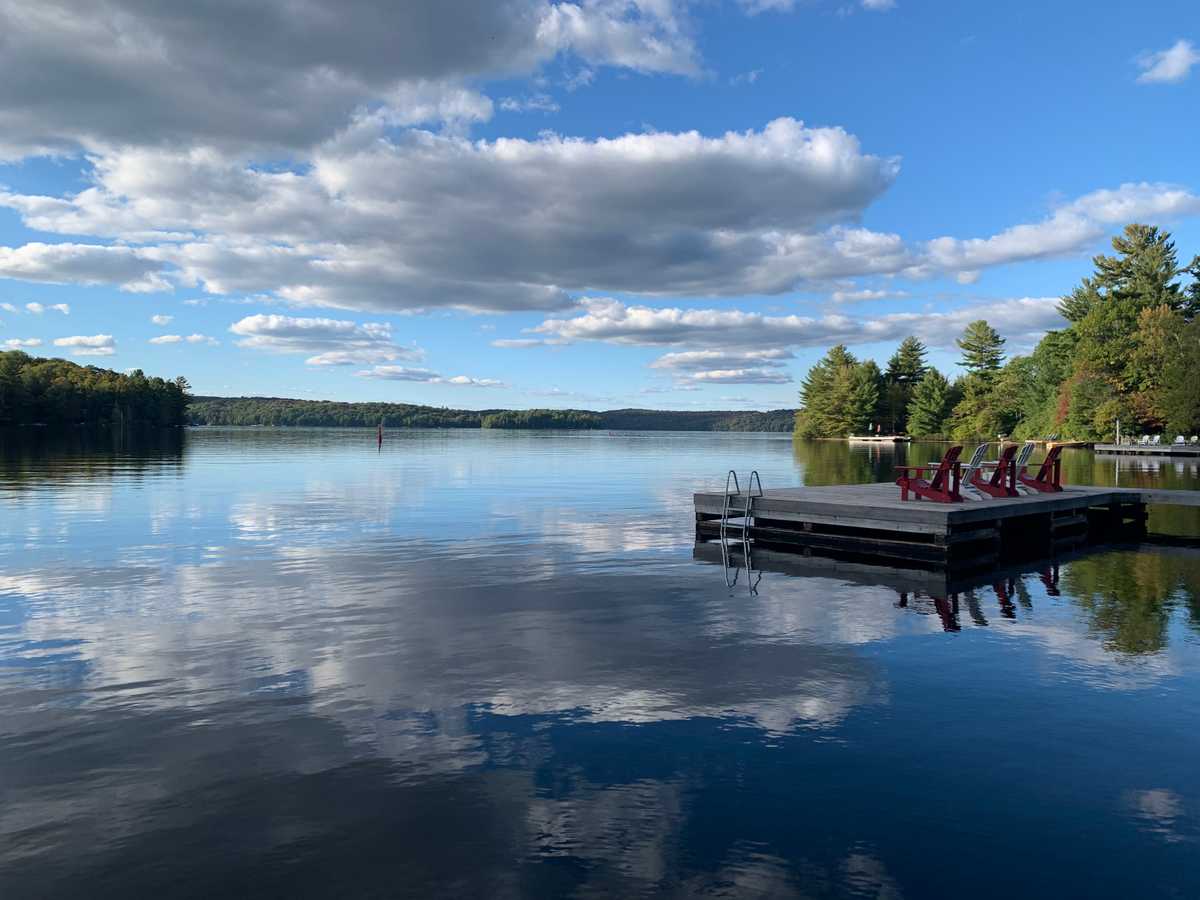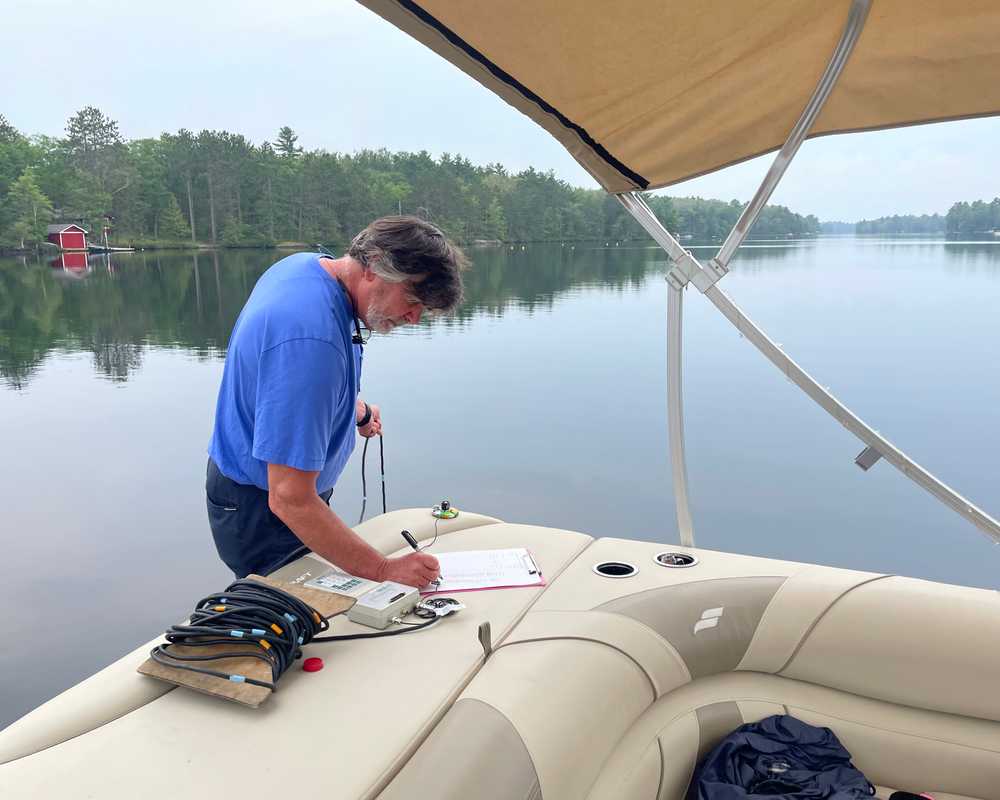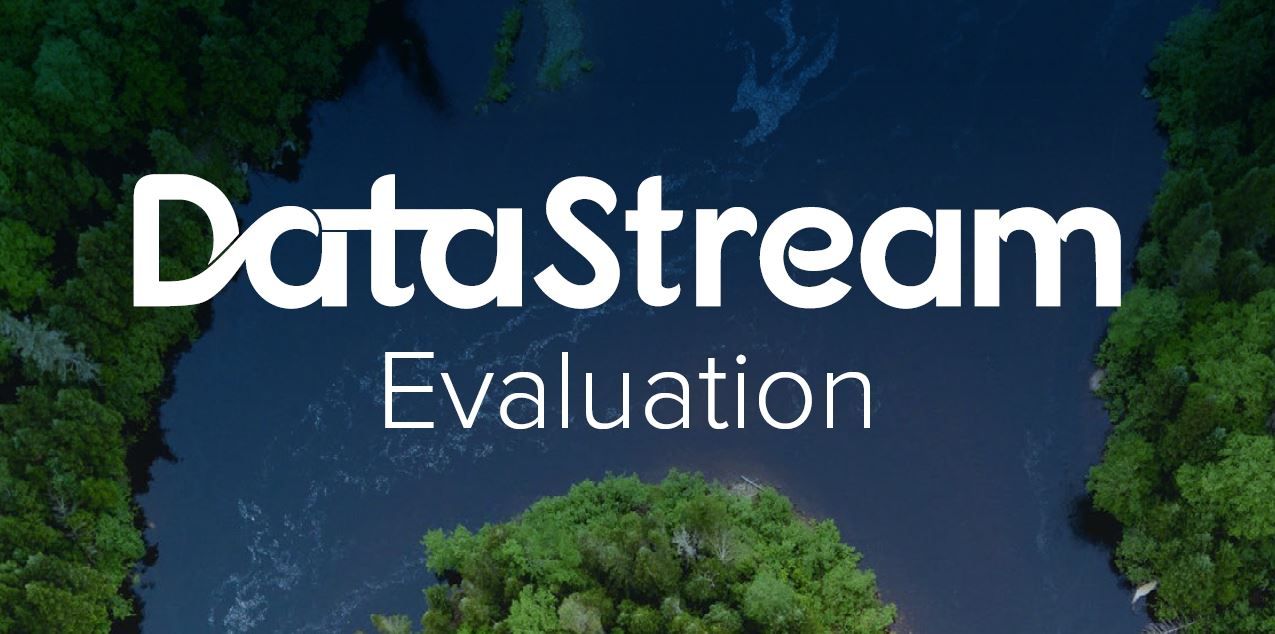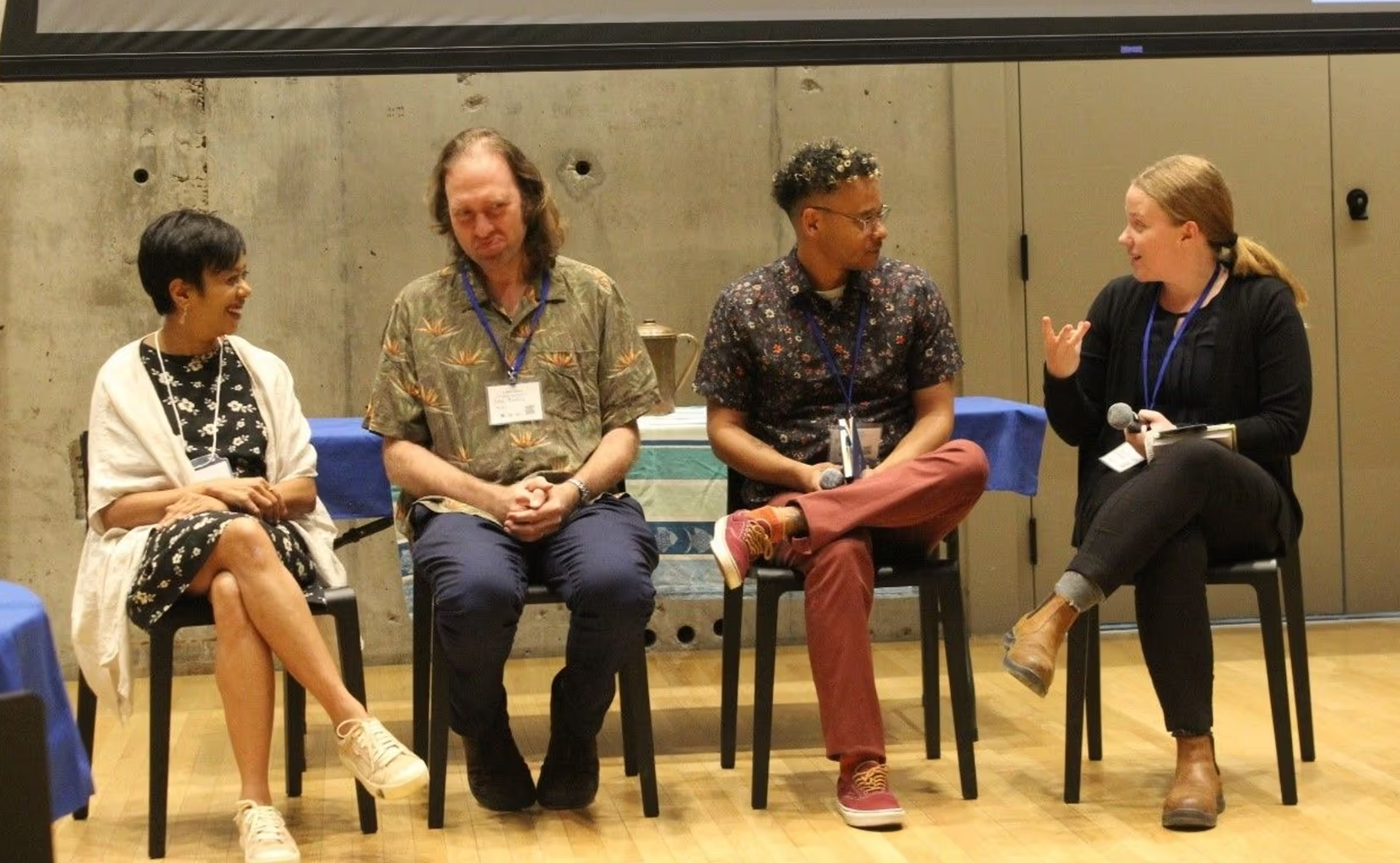
Insights from a quarter-century of science at the cottage
November 25, 2021

Liz Favot, Assistant Lake Stewardship Coordinator for the Federation of Ontario Cottagers' Association. Photo credit: Terry Rees.
Each April, cardboard boxes start piling up at the Dorset Environmental Science Centre, transforming the high-tech provincial lab into something more akin to an Amazon warehouse.
“It’s crazy,” says Liz Favot. As assistant lake stewardship coordinator for the Federation of Ontario Cottagers’ Associations (FOCA), a key part of her job is packing and shipping the boxes. Each one contains vials and jars for collecting lake water, plus a Secchi disk for assessing lake clarity.
They’re destined for the 700 cottagers who participate in the wildly successful Lake Partner Program, jointly run by FOCA and the Ontario Ministry of Environment, Conservation and Parks.
Each spring, volunteers take samples at more than 800 sites, stretching from Lake Erie up into the Boreal forest and from east of Ottawa all the way to the Manitoba border. Those samples are then sent back to Dorset to be analyzed for phosphorus, calcium and chloride levels.

Water sampling as part of the Lake Partner Program. Photo credit: Terry Rees.
The program’s reach is impressive. But what’s even more impressive is its longevity. While academic studies typically run for a year or two, the Lake Partner Program has been going strong for 25, making it the longest-running initiative of its kind in Canada. “There’s an incredible amount of water quality data that the public across Ontario has worked really hard to generate,” says Favot.
Identifying trends
Today, that data reveals a lot about how water quality is changing. For example, rises in phosphorus levels can herald the development of harmful algae blooms. Water clarity trends can shed light on the effects of invasive zebra mussels. Calcium content can indicate how lakes are recovering from the impacts of acid rain in the ’80s. And increases in chloride can point to the dangers of using too much winter road salt.
That’s why so many organizations rely on the Lake Partner Program for valuable insights: municipalities, provincial agencies, lake associations and private companies. It’s also a treasure trove of data for academic researchers, including Favot herself.
In addition to her work with FOCA, she’s doing post-doctoral work comparing nutrient levels between lakes that have harmful algae blooms and those that don’t. According to Favot, her research simply wouldn’t be possible without the Lake Partner Program. “Those types of questions really need big datasets to be able to have strength in the conclusions,” she explains.
The power of community science
Now, FOCA is making that information more accessible than ever by feeding it into the new Great Lakes DataStream portal. “I think DataStream is going to be a really important tool for the volunteers to really take ownership over their own data,” says Favot, who sees the partnership with cottagers as a key to the program’s success.
Together, they contribute thousands of hours a year. Many have been involved for more than two decades.
“There is no way we could gather information from this many lakes without the help of our volunteers,” she says. “That is the power of community science and what makes me passionate about this program.”
The results are in! DataStream's 2023 external evaluation
We asked for your feedback, and you delivered! DataStream is pleased to share the results of our 2023 external evaluation.
Community science on the agenda in the Great Lakes
Since DataStream began in 2016, we have focused on amplifying the important work of community-based monitoring groups. We’re excited that community science has been a central theme at the many gatherings we’ve attended over the past few months throughout the Great Lakes region.
Paddling and protecting the Madawaska
For the past four years, Madawaska Kanu Centre’s office team have been tracking the river’s water quality. Once a month, unless the conditions are too icy, they measure parameters like pH levels, dissolved oxygen and transparency.


